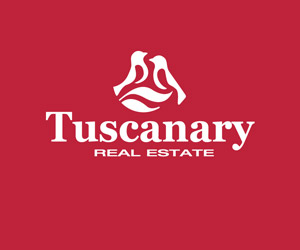Sweet spot Suvereto
Tuscany
Sweet spot Suvereto Tuscany. There are places in Maremma that are more magnificent. Places that will leave your head swooning. And locations that you won't want to leave. In a way that this small hill town just won't.
But.

Suvereto offers something that I have yet to experience anywhere else. It isn't any one single special thing. Even though it has lots. And stunning ones at that.
It is because it is a small pocket. Of quiet, rural, everyday life. Maremman life. A pocket whose cloth is a pentagonal medieval stone wall that holds inside little "treasures". Treasures like those our children collect on their days out. Precious little finds. Some that glisten. And others that don't. But together they tell a story.
In Suvereto daily life is still played out within those walls. It hasn't died inside like some others.
When you're taking your wine home... in demijohns





Tourists have found Suvereto. Not copious crowds. But enough - if you feel self conscious about these things - so that you aren't the only stranger in town when you take a walk around. Enough for the town to have bars and restaurants, shops and accommodation that cater to visitors.
But don't make the trip. Until. Until it is one of those days when you want to just chill. When you are verging on opting for staying put at your villa or farmhouse accommodation for the day, but a part of you doesn't want to "waste" a day of potential exploring before the holiday's end.
Then visit Suvereto. For it is then that everything in its pocket will come into play and it will do its thing. Filling your hours spent in its company with delight. But not overwhelming you. Sharing with you a few hours of a way of life in Tuscany that has been repeated for generations. Sprinkled with some gems.
For those little treasures include a tenth century castle with a view, a beautiful town hall that makes any girl feel like a princess when she walks up its steps.
One of the most important Romanesque buildings in Maremma.
An atmospheric dreamy cloister that will get your camera shutters clicking away.

Oh, and some of the most "cremoso" (creamy) gelato for miles and miles around.
Together. They tell a human story that goes back to the darkest of the Dark Ages years. A time when Vikings overran northern France driving the French court to England. When the Roman Empire was at it's greatest. A time of lead and iron.
All within a few minutes drive of a stunning coastline and some of Tuscany's most beautiful beaches.
It is where I go when for "re-entry" into life here in Maremma when I have been away for a while.
Oh. And did I mention that it just happens to be one of the "borghi più belli d'Italia" - most beautiful towns and villages in Italy.
Well, with the exception of the gelato - which is a personal recommendation of mine - those are the treasures that any guide book will mention.
But there are more that they don't. But you will need to really open your eyes and look.
If you have children with you, set them off on a hunt to find them. High up. Low down. Barely visible unless the light is right... They are all there for the finding. They will be your discoveries. No other tourist will be following the trail. For only the eyes of the archaeologists and the hands of the restorers know about these.
The Palazzo Communale
Suvereto's beautiful Palazzo Communale - its Town Hall - with it's arched "Loggia deo Giudici". It was built in the 13th century when the towns folk fought, and won at cost, their right to the Charta Libertatis - freedom and self autonomy for the city.
As civic architecture goes, it is undisputedly one of the most beautiful examples in Italy.
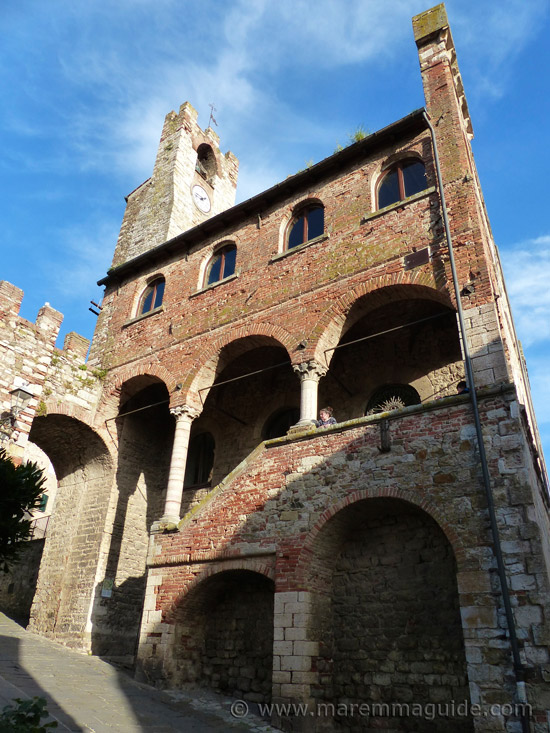
Suberetum
Suvereto sits on the slope of a low, soft hill, in the valley of the Val di Cornia. Overlooking the coastal plain and the glistening emerald Costa degli Etruschi (Etruscan coast).
The earliest records in existence date it from the year 973, when it was known formally as "Suberetum". But in the local dialect as it is today, as "Suvereto" or "Sughereto".
A name that comes from the cork woodlands - "il bosci di sugheri" - that surround it today as they have done since time in memorial. Woodlands that were home to charcoal burning, carpenters and blacksmiths.
The vernacular "Suvereto" is derived from the Latin "subere(m") - sughero (Italian for cork) - with the collective and common place name suffix of etu(m)

The Charter Libertatis
Lord Ildebrandino VIII of the noble Aldobrandeschi family that ruled great swathes of Maremma, granted the the town of Suvereto its "Charter Libertatis" in 1201. Changing, fundamentally, the nature of the Aldobrandeschi patronage of the resident lords and their vessels.
The Charter gave Suvereto freedom from most community taxes and the ability to regulate its own. And it's residents the freedom to sell, buy and donate their property.
In granting the Charter, however, Lord Ildebrandino didn't conceded political control over the town. That he kept. Together with a few other conditions that meant that not all of Suvereto's Lords monies were theirs!
Vicoli dei Vicoli
One of my favourite streets in Maremma. Because it always has something to "say".
Lovers taking a stroll.

Getting ready for dinner...


Il chiostro dell'ex Convento di San Francesco
The "chiostro dell'ex Convento di San Francesco - the cloister of the ex Convent of Saint Francis was built in 1286. And, whilst the tiny church next door and the first thing you see as you walk up the street to its summit - the the Chiesa del Santissimo Crocifisso (The Church of the Holy Cross) - is attached to it, it in fact is a much later addition. Built in 1500.
The entrance to the cloister is through the archway on the right of the church. And at it's centre is the terracotta paved, Piazza della Cisterna.
There is a red vespa parked-up most days that just begs to be photographed.



At night.

Suvereto's Sagra del Cinghiale, Arte e Folklore
And it is at night here, with long tables set out along the cloister corridors and inside its piazza that Suvereto's annual "Sagra di cinghiale" - wild boar food festival, with art, folklore, historical costumed re-enactments, and an archery competition thrown in too during the day for good measure, takes place.
If you happen to be visiting Maremma in the winter, then settings in Tuscany for some home cooked food - we are talking boar cooked to a centuries old recipe - don't come much more atmospheric than this. The tables are laid in medieval style and everyone involved n serving and entertaining is dressed in medieval costume.
I need to check-out if you get a knife and fork to eat with or not, as I suspect that you don't!
It is very popular. So purchase your tickets in town in advance. Unlike Maremma's summer sagre, turning up on the night won't get you a seat at a table at this one.
It runs over 10 days: from the last few days of November into the second week of December.
The dates for this year are 26 November 2016 to 8 December 2016.


I love the detail on this door. Such elegance.

The Chiesa di San Giusto Vescovo
Situated just outside of the town's southern "porta" and enclosing walls, bordering the Piazza Vittorio Veneto is one of the most important surviving Romanesque buildings in the Province of Livorno. The Chiesa - or Pieve - of San Giusto.

Earliest records of its existence date back to the year 923, but the facade you see today - including the two lions heads on the top of its portal capitals - was constructed in 1189 by master Romanesque builders Barone di Amico and Bono di Calcisciano.
 Two lions with their anthropomorphous prey!
Two lions with their anthropomorphous prey!

Don't walk past!
DON'T walk past its door if you see it open. It usually is. Because it looks like just another church and the city walls and gateway are right in front of you welcoming you in with a view of its stone-paved medieval streets, glimpses of the doorways of shops, and the promise of a coffee, Italian-style, or a glass of local wine.
NOR if your little ones are giving you the eye because their gelato was the reason they thought they were visiting Suvereto in the first place ;)
 The Porta di Sotto - also known as the Porta Principale - entrance in Suvereto's ancient city walls.
The Porta di Sotto - also known as the Porta Principale - entrance in Suvereto's ancient city walls.
DON'T succumb and commit to taking a look when you come back past after exploring inside Suvereto's historic centre.
Because that door might just be closed when you return.
And you must. At the very least.
Pop inside. And look up.

Because the roof is truly majestic.

And the timbers of its trusses and beams have sat firmly there, without fail, for more than 900 years. Nine-hundred years!
Uncloaked, having been hidden for centuries
This church was recently restored by the hands and under the direction of archaeologists that love with a passion what they do. Layer by layer of dust and grime on the outside. And layer by layer of plaster and paint on the inside.
Wonderful things were found.
The hidden crypts
Not just one but two. The entrance to the first small one, was found under the confessional on the left wall of the nave.
The second and larger was found under the floor of the crossing.
The builders' signature

Now, even I have left a hand print with a date in cement in my time whilst doing building works, but this signature is quite something else!
But this inscription one is in the vault of the left transept is 202 cm long. With each letter coming in at between 6 or 7 to 11 to 12 centimetres tall. And uses abbreviations of some words: I guess to fit it all in in two lines.
HOC INDUSTRIA MAGISTRI OPUS EDOCTE p(er)EGIT BARONIS AMICI BONIQ(ue) CAL/CISCIANI T(em)P(O)R(e) HOC FUIT RI(n)TELLI VIVE(N)TIS PLEBANI SUB SPATIO X ANNO(rum) MCLXXXVIIII//.
It is dated the year 1189.
Although signatures of architects, builders, and sculptors carved into their creations commonly occurred around that time, this one is more complex. And mentions too one parish priest, named Rintello, who perhaps was there when the new church was built.
A priggish allegorical tale to keep parishioners in order during sermons
Find the allegorical stone carving with a crowned lady, a bull and a dragon. Discovered under thick layers of plaster and a covering fresco. But you will have to look up. (Hint: find an archivolt.)
Fresco after fresco and the beginnings of more
This one was uncovered next to the confessional in the right wall.

A word about taking photographs. There are many signs inside the church telling you that the taking of photographs is forbidden. With, or without, the use of flash.
I obtained permission in advance from the parish priest before taking those you see here.
It is of the, "Madonna col Bambino tra i santi Giovanni Battista e Jacopo e i donatori" - Madonna and Child with Saint John the Baptist and saint James and donators. Dated around the end of the 14th century.
In the upper section of the arch, between acanthus spirals, is Christ blessing.
And in the right-hand alcove San Benedetto.

The wording to be found at the bottom is the signature of the artist, one Ghetto di Jacop, a popular Pisan artist of the day in this part of Maremma. It reads: "Ghetto di Pisa me pinse".

The start of another was uncovered above the same confessional. But had to be left - it is now recovered - for fear of the roof above it collapsing if the wall was disturbed anymore.
But it is this drawing in the transect - the preparation for a fresco depicting a scene from the life of Saint Giusto dated around the first half of the 15th century - that I find more fascinating.
There is something about the preliminary strokes of an artist. In the flow of their hand. Without having to pay heed to perfection. Nor colour. I wonder who he was? And why wasn't his work finished?
If you get your eye in, you can see his that his outline work stretches across the entire ceiling.



Zoomorphic carvings
Find four zoomorphic carvings in the ashlar masonry. Three in relief. Two inside and two outside.
I'm not giving anything away: this is the easy one to spot!

Still outside. Along the right wall of the church that was once continuous with the cemetery, find an epigraph. An obituary. That was written across two ashlars: the writer ran out of space. Only the letters "lli" are on the second stone block.
The text isn't well ordered: it isn't written in a straight line, but the words, carved with mixed lower and upper case letter, follow an upward line.
It reads: "BUONACURA FILII BARO(n)CELLI//."
And tells of one Buonacura who lived under the patronage of Baroncelli. It's paleographic characters also tell us that it was written during the first half of the 13th century.

And something else...
The church was also party to an act of certain notoriety. In 1315, behind its main altar became the temporary burial place of the German King and Holy Roman Emperor, Henry VII of Luxembourg.
The poet of the day, Dante Alighieri, describes Henry in his work "Paradiso" as, "He who came to reform Italy before she was ready for it". For Henry tried, in an outright war environment between the Guelf and Ghibelline factions, to regain Imperial control over the states of 14th century Italy.
Crowned Emperor on 29 June 1312, his rule was a troubled and short one. He died in Buonconvento, Siena on 24 August 1313.
OK. You might say. But what is infamous about him being temporarily buried in Suvereto?

Well. King Henry's premature death - he was only 38 years old at the time - and the violent anti-Imperialist opposition he encountered (indeed he entered the Eternal City by force) - led many to believe that he had been assassinated. Poisoned whilst taking Holy Communion. And the rumours began to spread.
Whether to cover-up any signs of poisoning. Or because there wasn't anytime to treat his cadaver for transportation to a resting place fit for a Holy Roman Emperor. His burial was a hasty one.
But not until after his body was roasted over a fire. His head chopped off and boiled. In Suvereto. By the monks of the Convento di San Francesco. The one with the pretty cloister you have just taken a look around!
Now, whilst scientists who have opened his sarcophagus - three times now - in Pisa Cathedral have found high levels of arsenic in his bones which would support the poisoning theory. A lot of medications of the day were arsenic based. And those same bones, albeit burnt and with their flesh stripped off, were originally put in red wine to preserve them. Why would someone do that if they were trying to cover-up a murder?

Most scholars believe that Henry died of a fever whilst recovering from malaria. And that the burning and boiling was actually the postmortem funerary practice of the day for a medieval king or queen who died a long distance from home. In preparation for transport at a later date when the tomb or crypt in the final resting place was ready.
The macabre medieval practice is called "spolpamento" in Italian. Excarnation. It was carried out by monks whose monasteries received income for the work.
Banned by Pope Boniface VIII in 1299 and then again in 1300, by the very early years of the 14th century a change of Pope saw witness to the granting of privileges to kings and licenses to some nobility to enable them to have their bodies divided and buried where their will desired. As many had done in the centuries before.
The practice become associated with high status and distinction. Especially as obtaining a license from the Pope for an exemption from the ban was very difficult. And much sought after. In the face of popular demand, in th every early the church conceded and the ban was revoked.
Once again the practices of evisceration and excarnation proliferated! Just at the time of Henry's death. And his active excarnation - "mos teutonicus - followed in the footsteps of his ancestors. As it was in Germany that the practice had originated. Where flesh was removed by boiling body parts in water, vinegar, or wine.
So it looks extremely unlikely that the reason for the burning and boiling of his body had anything to do with getting rid of evidence. But it does make that stroll around the convent cloister feel just a little different now!
What I can't get to the bottom of, however... Oh how I do go off on research adventures when writing this guide! Is why, if he died in Buonconvento, some 130 kilometres away, was the "deed" done in Suvereto?
One source sites Paganico - some 50 kilometres from Buonconvento - as where the defleshing took place, rather than Suvereto.
Note. The peach coloured building to its right that looks like another church once was. The ex Chiesa di San Michele Arcangelo, built in 1881. Abandoned and then a local parochial hall, it has since been restored and now houses the Museo d'Arte Sacra Sala San Giusto. But I have yet to find it open.
Yummy gelato and pastries
When you spot these benches in town - you can't miss them as they are the meeting place for the local men and if you are coming into town from the main car park, the most direct route takes you straight past them - then you will have found "Il Gallo Golosone". The place for gelato.
Run by Stefania and her daughter,
If it is busy. Wait. It usually is and for a good reason. It serves some of the very best gelato I have tasted. Made on the premises by Stefania and her daughter who own and run this bar and "gelateria artiginale".
Be advised. The ice cream on display in the freezer in the bar on the dividing wall between these two bars is the confection Cart d'Or. Just don't think of it. OK!

If, like me, when it comes to gelato you sometimes have eyes bigger than your stomach, another little word of advice. The Euros 2,50 "grande" filled overflowing with dense, rich chocolate orange, malaga and... Will leave you skipping lunch or dinner.
TIP. The "zenzero" (ginger) flavour - it comes in combination with - is one I haven't seen anywhere else in Tuscany and is exquisite.

They also bake a delicious array of tiny pastries and big celebration cakes. Just saying! A smooth "amaro" espresso in Italy needs a sweet bite with it, doesn't it!
And whilst there are only three tables indoors, just across the road there are plenty of tables on two decked platforms that belong to the bar from which you can watch the world go by. Unless that is you want to join the local men folk for their afternoon/evening gossip.
Via Cavour, N.40
Which leads me to tell you about the house in between the two decks. Number 40 in Via Cavour. With its wrought-iron gate.
It is a house that has fascinated me for years. Old. Very old. Stately even. Lived in or not it is difficult to say.
But it is at its entrance that there are things to be "found". .... At the top of each of its two jambs you will find a 14th century stone herbarium.
On the top of the left capital a cowslip and a rosette, alternating with three acanthus leaves of different dimensions. And another acanthus leaf on the capital's left flank.
On the top of the right capital a laurel leaf, a daisy in the middle between two acanthus leaves, one bent and the other raised. And a rose in bud. It's flank, a large acanthus leaf.
The miracle that saved Suvereto
Legend has it that in 1767 a flash flood inundated the town and threatened the lives of its inhabitants. The grills under the entrance door in the heavy defensive walls couldn't cope. Waters backed-up filling Suvereto's. The levels rose quickly, trapping all within. And rose and rose.
When all seemed lost, the miracle happened. On their ow. And against the the pressure of the waters within the city walls. The doors of the southern "porta" opened. Inward. own, opened inwards.
The flood waters surged out in a massive torrent. Saving all within.

It was decided to construct a sanctuary above the door to mark the event. In it was placed a 16th century oil on canvas painting of the Madonna and child - Madonna Immaculata - by Sienese artist Francesco Vanni. dated between 1580 and 1590.

If you happen to be a 16th century art aficionado and have difficulty taking a good photograph of the painting - the light sources in the church and its glass panel make it near impossible - don't fret. This one is a reproduction. The original - without the gold leaf crowns - can be found (when it is open) in the town's Museum of Sacred Art.
In later years it was given a home in the Palace chapel. And then, in 1772 a whole church was built in the centre of town to house it. The Chiesa della Madonna di Sopra la Porta. The Church of the Madonna above the door.
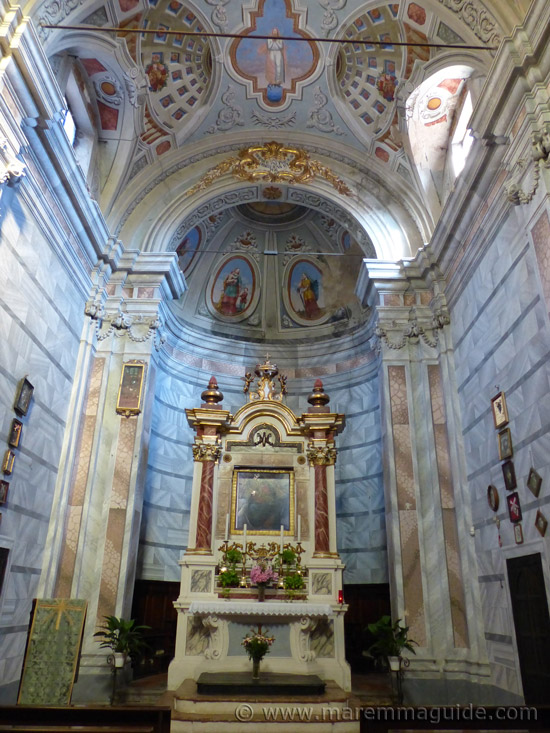
You will probably find yourself without knowing it, sat on its steps eating your gelato, as it is just a hop and a skip from Il Gallo Golosone.
Recently cleaned, it's two side streets that lead into the town's main thoroughfare, are now home to tables and chairs of local eateries and bars.

Piazza Dannunzio
The beautiful Piazza Dannunzio with its palm trees next door to the Palazzo Communale. A place to sit, chat and watch cats sleeping.



Don't be in a hurry. Sit a while. Watch a cat sleep.

And you'll catch the first rays of the evening sun light-up - momentarily - the grass in the garden on top of the wall. Before the lovely slow September dusk - that gives you time to wander some more and children to play after school holding on to that feeling that it is still summer - starts its closing of the day.

Tiny gardens

Spot the window where there was once a door.


And "due passi"
Early evening "due passi" (walks).


The medieval city walls
Built in a pentagonal shape Suvereto's city walls had not five "torre" (towers), but eight. They enclosed the town and its castle.
On the main and southern "Porta Principale" - also known as the "Porta di Sotto" (the door underneath) - entrance to the ancient city are two coats of arms.
The first dedicated to Jacopo III d'Appianio, dated 1468.

In the second, along with a cork tree, is a lion. It is the lion of the Lords Aldobrandeschi of Sovana whose rule once extended all the way to these parts.

The Porticciola
The "STOP" sign inside the historic centre of town because you are about to leave the protection of the city walls through and join a "main" road. But the traffic here is mostly at a snails pace.
The Porticciola - northern gateway - also known as the Porta di Sopra.

Walk outside and look back at the Porticciola to spot another inscription that dates its construction as the year 1265. (At the base of arch on the right.)
The "torre"
The best way to see them is to take a walk around the entire perimeter of the historic centre of town. A good place to start is at the southern entrance. The one you will see first as you drive into town.
Follow the wall, past the shop, bar built into it. And then a bank in a new building on your right. Along Via Giovanni Leporatti. And at the turn in the road, you will see this one.

Keep walking/driving - it is a single track one-way street - and you will spot another all one currently under covers and being restored.
Then a third. Shorter one. At which point you should now have your eye in and see this one.

Before arriving at the grand one next door to the Porticciola.
It is up alongside this road outside of the city walls in a part of town known as "Insegne" that the boiling of the dead Holy Roman Emperor took place.

Continue up the road, keeping to your left to see this one.

There is another too. Now incorporated into a private home. But you'll not miss it's round structure.
Then the road takes you down into town. Where, if you are driving, you will have to follow the route to the right - Tutti direzione" - pass the town's main car park. Down to the main road that joins Suvereto with Campiglia Marittima. And, bearing left after the traffic lights, back up the hill, to return to where you started.
Did you find all eight?
Suvereto's castle - the Rocca Aldobrandesca
Now, whilst there isn't much for your younger ones to "see" at Suvereto's castle - the Rocca Aldobrandesca. The internal courtyard's four walls, open to the elements and home to pigeons, will surprise them when they climb the metal stairs to get inside for its lack of "something".
Unless they, like me, like to stare and put back in place from the evidence within the stones of those same said walls, where the upper floor, staircases and doors were.
Once.
Eleven centuries ago.
There is the last piece in the Suvereto treasure hunt to be found. An inscription - and a beautifully written one at that - that records the construction of the fortress by the City of Pisa in 1308.

And in September, some stunning seed heads in the private gardens around the castle.

Take a better look and find out more.
The way back down
On the way back down into town - for there is only one path up - before you reach Piazza Dannunzio with its palm trees, take a left down the alleyway called Via dei Giudizi that continues straight into Via del Giudizi.
Your kids will make it faster down than you!
A word to the wise... I know I worry too much! But anyway... But just let them before they set off that the steps are so worn that they curve where feet have landed, century after century after century. And are very, very, smooth. Which means that they can get slippery.
Looking up Via dei Difficili.

And down Via del Giudizio.

And up.

The old lady with whom we spoke, as she watched my two "assistants" take the whole route down in one go from her apartment window. Fast. Told us that it is well accepted that you need a fruit juice for the sugar before attempting it the other way!
Other things to see
The Museo Artistico della Bambola
A very particular and tiny museum of dolls. The Museo Artistico della Bambola. You'll find it along the main street - Via Magenta - in the town's historic centre. It houses what was once a private collection of old dolls
I have popped in a couple of times with my young daughter, but she didn't hover on on either occasion. As I said, it is "particolare".
Open on Friday, Saturday and Sunday from 10:00 to 13:00 and from 17:00 to 20:00.
The Fonti degli Angeli - the Angels Fountain

And lastly, situated outside of the protection of the medieval walls along the road out of town, the Fonte degli Angeli. The Angels fountain.
Once the source of drinking water and, not so very long ago, where the local women did their washing together.
The coat of arms is another dedicated to Jacopo VI d'Appiano, dated this time 1582. The year of its construction.
Suvereto's festivals
Suvereto is a small town, but it doesn't always sleep at night!
In addition to the wild boar sagra and art and folklore festival at the end of November/beginning of December each year - see above - the town has an annual calendar of events that will take you from local wine tasting under the stars to encounters with spooky witches!
For each year's dates visit the Comune di Suvereto website at www.comune.suvereto.it
June onwards - Estate nel Borgo
A summer programme of Jamaican Jazz, Rock, Rockabilly and Funk concerts, street dinners, open air theatre, an archery competition, a tennis tournament, a mushroom sagre and lots of zero kilometre food and wine. Everything kicks off on the 1st May each year and lasts until the end of September.
Not to miss if you happen to be in the area at the time are Suvereto's palios. The same race held twice a year between the town's "terziere" (districts). Those inside the ancient city walls of Castello dressed in black and yellow and coming from the right hand side of town, closest to its "Rocca" (castle).
Then San Francesco in red and blue from the left of town around the Chiesa del Santissimo Crocifisso and the ex convent and cloister of San Francesco.
Borgo in green and yellow from the outskirts of town.
And then those of the Forni and Ferriere (Ovens and Blacksmiths) in red and yellow, and the surrounding hamlets of Prata in red and white, and Belvedere and San Lorenzo.
Colour. Noise. And sweat. Lots of it!
For what was once a horse race - already a long standing tradition by the year 1700 - along dust roads from the surrounding countryside ending abruptly right in front of the Chiesa di San Giusto Vescovo, now no longer involves any horses. For safety reasons the horse has been replaced by wine barrels. We are in wine country after all! Weighing in at five quintals a piece.
Now, the barrels aren't ridden! But pushed by brute force and the weight of two men from each terziere. Around, up and down the cobbled streets of the historic centre of Suvereto. No mean feat I have to tell you.
The palio di Santa Croce takes place in May. And the Emperor's palio - the palio dell'Imperatore - on the 13th of August.
August - Calici di stelle
Suvereto's wine makers and their produce under the stars for a night of tasting some great wines of the Etruscan Coast. Some of which come from the cellars of arguably architecturally and artistically the most beautiful in the world.
If you take a drive down the road to visit the winery for example of Petra, you will see why they are considered to be so. When I first saw it I thought an alien ship had landed on the side of the hill on which it has been carved out.
September - Borgo dei Ragazzi
On a Sunday at the end of September a whole day of things to do, make, see and stroke for children. From creations from card, wood, and icing sugar! To modern dance, karate, and theatre.

October - Mediovo alla Rocca
Held at the Rocca Aldobrandesca castle, you'll get to see men - Suvereto's cavaliers, the "Cavalieri di Ildebrandino", in medieval costume brandishing swords at each other!
October - La Notte delle Streghe
Fun on the spookiest night of the year. Halloween in Suvereto: the Night of the Witches!
December - Calci di San Silvestro
A night of fireworks on New Year's Eve.
Not to miss nearby
The Parco Naturale di Montioni
If you are in Suvereto then you are a only a hop and a jump from the Parco Naturale di Montioni that covers the last of the hills from Massa Marittima down to the sea at the Golfo di Follonica and into Maremma Livornese territory.
Bursting full of wildlife and some rare fauna, it is also home to a sulphurous thermal bath (now in ruin) that Elisa Bonaparte soaked in whilst ruling Tuscany for her brother.
A fortified church believed to be a Knight's Templar stronghold along the coastal money route, that once served a medieval village of which there is now no trace. It's tower - that you can still climb has magnificent views of the Golfo di Follonica. The Pievaccia.
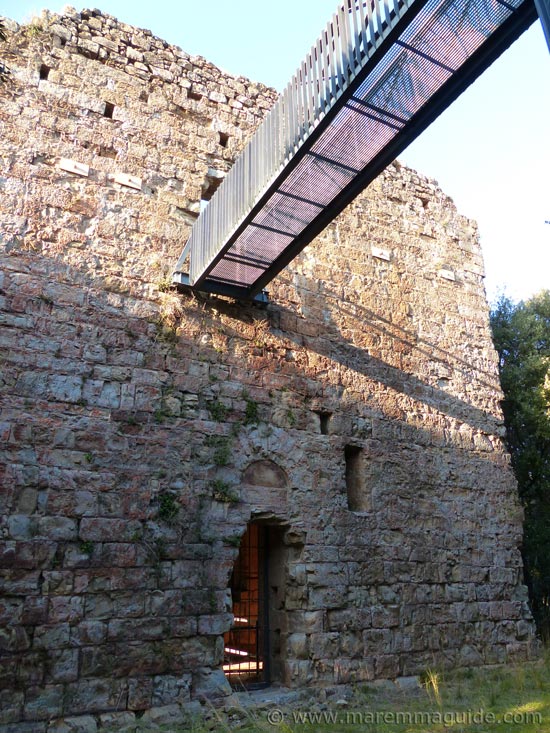
The ruins of five castles and another tower. I haven't reached them yet!
And ancient alum mines. To name just a few.
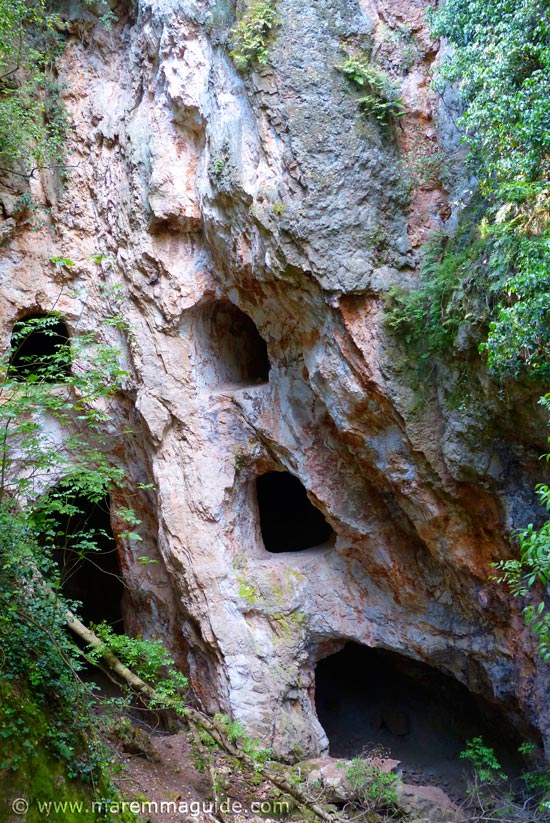
Plus. A treat for kids (with the appropriate care) and wildlife photographers. Sounders of wild boar that visit - most days in the early evening - the hamlet's car park.

The link to the page about the park again: the 7,000 hectares of the Parco Naturale di Montioni and it's treasures. Even if you only park-up in the hamlet, take a coffee in the (one) bar and a short stroll into the woods along the main footpaths, you will see a lot.
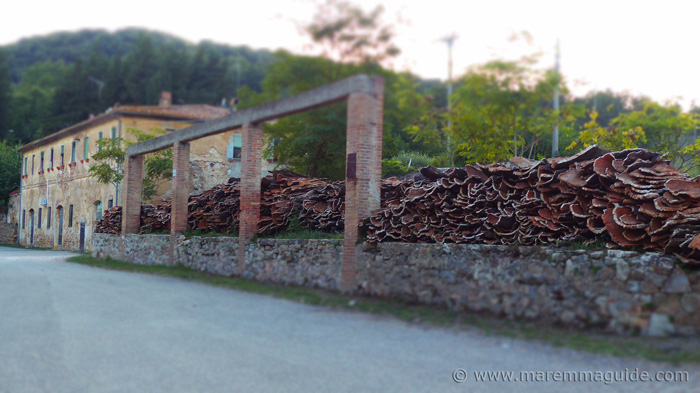 The late September cork harvest in the hamlet of Montioni.
The late September cork harvest in the hamlet of Montioni.
And if you have more time to spare, its trekking, mountain bike, horseback riding routes and trails are really easy to moderate going. Which means you'll find Sunday afternoon strollers alongside out for the day trekkers in those woods. All with little eyes watching them!
Explore some more...


















